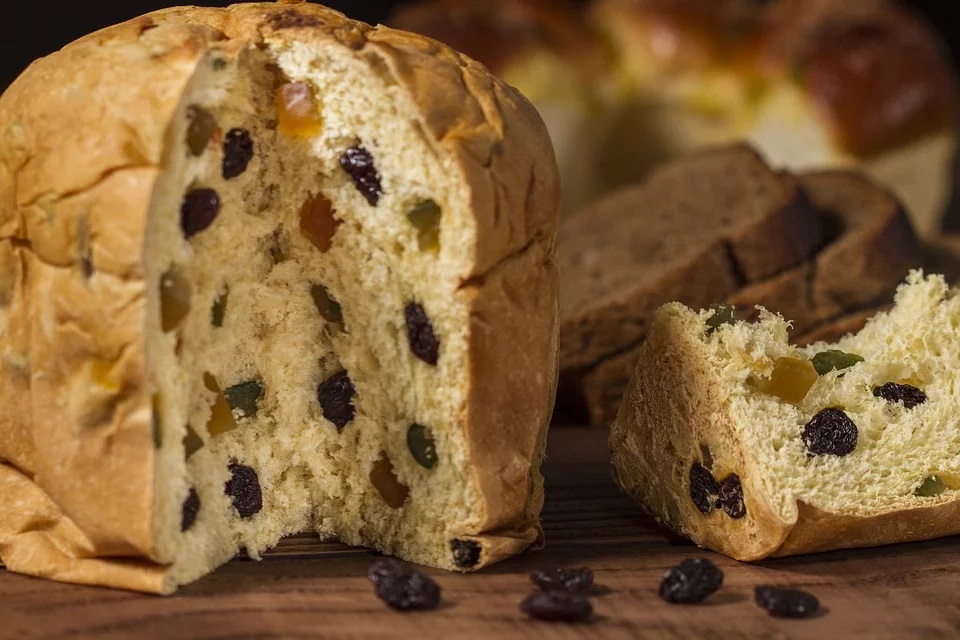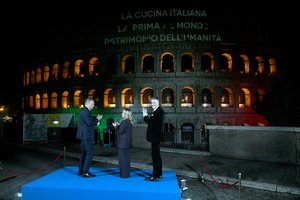Here are a few of them:
The Santa Claus marathon
Every year, Madrid hosts a marathon in which around 10,000 people dressed as Santa Claus or his elves run through around six kilometres of streets to raise money for charity.
Hide your brooms!
In Norway, there is a Christmas tradition which has everybody hiding their brooms before they go to sleep on Christmas Eve.
This is because it’s believed that witches and evil spirits arrive during the night to steal them.
Why do we use firs as Christmas trees?
Because firs are an evergreen plant, Druids, or Celtic priests, considered them a symbol of life.
In the Bible, the fir represents the Tree of Life: its leaves turned into needles when Eve picked the forbidden fruit and didn’t bloom until the night that Baby Jesus was born.
According to another legend, Adam took a twig from the Tree of the Knowledge of Good and Evil in the Garden of Eden.
This twig then became the fir whose wood was used to make the Holy Cross.
It’s also believed that the Christians chose the fir for its triangular shape, which represents the Holy Trinity.
Jingle Bells wasn’t written as a Christmas song
Originally, the song Jingle Bells was created not for the festive season, but to commemorate Thanksgiving in the US.
It was written in 1850 by the composer James Lord Pierpont to be sung on the American holiday.
The song was published in the autumn of 1857 under the title One Horse Open Sleigh.
... And Rudolph the Red-Nosed Reindeer was born in a department store
Rudolf the Red-Nosed Reindeer was created in 1939 for the department store retailer Montgomery Ward.
Rudolf is the brainchild of advertising copywriter Robert Lewis May, who was 34 years old when the store asked him to write a joyful Christmas story with an animal as the main character.
May chose to use a reindeer because his daughter, who was four years old at the time, loved the deer at the Chicago Zoo.
Santa Claus is a person and a place
While we have Christmas Island, the US is home to many towns which borrow their name from the man in red himself: Santa Claus.
One of these towns is found in Spencer County, in Indiana.
The candy cane has a secret religious meaning

Ancient legend has it that the candy cane was invented by a confectioner who was a devout Christian.
It’s believed the candy cane was a tribute to Jesus: in fact, if you turn the sugary sweet upside down, you’ll notice it represents the letter “J”.
We can thank the Germans for fake Christmas trees
Fake Christmas trees came into use in the mid-17th century and it was the Germans who first produced them.
Originally, they were made with goose feathers which were dyed green.
The word presepe has Latin origins
Italian for “nativity scene”, the word presepe derives from the Latin praesepe, meaning “manger”.
Leavenworth: A winter wonderland
In the American state of Washington, there’s a Christmas-themed winter wonderland called Leavenworth.
Home to less than 2000 people, this tiny town transforms into a Bavarian Village peppered with market stalls selling food and decorations for the festive season.
At sunset, everyone gathers to sing Silent Night and watch the town transform into a splendid sea of lights.
The world’s biggest Christmas present
A symbol of New York, the Statue of Liberty was gifted to the US by France on Christmas Day.
The statue was donated as a gesture of friendship and to commemorate the Declaration of Independence from the previous century (1776).
It was transported in 1883 boxes on a small ship (which had to make many trips) and assembled in New York.
However, the statue didn’t have a pedestal due to a lack of funds.
The base was eventually paid for by the citizens through a public appeal made by the New York World newspaper.
Lego trees are a real thing
In 2014, a 10-metre-high Christmas tree was made with Lego bricks in Sydney’s Pitt Street Mall.
In 2011, the biggest Lego Christmas tree in the world was built at London St Pancras railway station.
It was 12.2 metres high and was made from 600,000 bricks.
A gift from Norway
Every year since 1947, the Norwegian capital of Oslo has gifted London a Christmas tree in thanks of Britain’s support during World War II.
Panettone: Tony’s bread?

Some people suggest the origin of the word panettone lies in a “culinary mistake” and that the name of the sweet comes from Pan di Toni (Toni’s bread).
This theory suggests that the Sforza family was hosting a lavish Christmas Eve dinner when the house chef burnt the dessert.
Toni, the dishwasher, sympathetic to the plight of the distraught chef, offered to sacrifice the naturally leavened bread dough he had stashed away for himself.
This starter dough was promptly enriched with sultanas, candied citrus peel, butter, sugar and eggs.
The result was a resounding success among the guest and the sweet was dubbed Pan di Toni.
Cuban Christmas in July
Not everyone celebrates Christmas on December 25: in Cuba, the festive season was moved from December to July, between 1968 and 1997.
The official reason was that by moving the date, Christmas wouldn’t interrupt the sugar cane harvest.
Clams at Christmas
Eight in 10 Italians place clams at the centre of their Christmas Eve dinner.
More than €30 million are spent on clams in Italy during the festive period.












